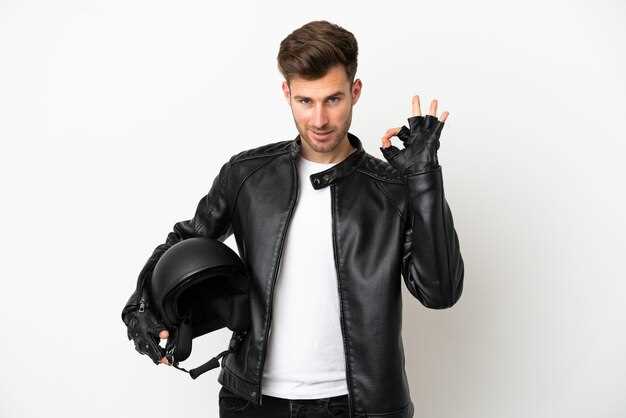
Choosing the right riding jacket is crucial for both safety and comfort while on the road. A high-quality jacket not only provides protection against the elements but also shields you from potential injuries in case of an accident. With numerous options available, it’s essential to understand the key features that make a riding jacket suitable for your needs.
When evaluating a riding jacket, pay close attention to the materials used in its construction. Look for jackets made from durable, abrasion-resistant fabrics that include reinforced stitching for added protection. Additionally, consider jackets with built-in armor or pockets for armor inserts, ensuring that you are safeguarded against impact in vulnerable areas.
Another important aspect is the fit and comfort of the jacket. A well-fitting jacket allows for freedom of movement, which is vital for controlling your motorcycle. Features such as adjustable cuffs, waistbands, and ventilation options can significantly enhance your riding experience. Ultimately, investing time in selecting the right riding jacket will not only provide essential protection but also contribute to your overall enjoyment on the road.
Understanding Different Materials for Maximum Protection

When selecting a riding jacket, the choice of material is crucial for ensuring safety and comfort. Several fabrics offer varying degrees of protection, breathability, and durability. Understanding these materials can help you make an informed decision.
Leather is a classic option, renowned for its abrasion resistance and durability. Full-grain leather provides the highest level of protection, while treated or top-grain leather is lighter and more flexible. However, leather requires proper maintenance to stay in optimal condition.
Textile jackets, made from synthetic fibers such as nylon or polyester, are popular for their versatility. These materials often come with waterproof and windproof properties, making them suitable for various weather conditions. They can also feature reinforced areas for added protection without sacrificing comfort.
Cordura is another synthetic fabric known for its strength and resistance to tears and abrasions. Many riding jackets use Cordura as a base material, often combined with other protective features like armor pockets. This creates a balance between safety and comfort during long rides.
Mesh jackets, typically constructed from a combination of nylon and polyester, are ideal for hot weather riding. They provide excellent airflow while still offering some level of protection. However, riders should be cautious of their limited impact resistance compared to leather or heavy textiles.
Additionally, many modern riding jackets incorporate advanced materials like Kevlar, which is used in areas that are more prone to abrasions. This lightweight, high-strength fabric enhances protection while maintaining flexibility and comfort.
Ultimately, the best riding jacket material combines protection with comfort to suit your riding style and conditions. Whether you prefer leather for its traditional look or synthetic materials for their modern features, understanding the differences will help you choose wisely.
Key Features to Look for in Riding Jackets for Safety
When choosing a riding jacket, protecting your body should be the top priority. A quality riding jacket should offer several essential features to ensure maximum safety while on the road.
First and foremost, look for jackets constructed from abrasion-resistant materials. These fabrics, such as leather or high-quality textiles, provide significant protection against road rash in the event of a fall. Double or triple stitching in critical areas enhances durability and strength, ensuring the jacket can withstand impacts during rides.
Impact protection is another crucial feature. Many riding jackets come equipped with armor inserts at the elbows, shoulders, and back. These pads should meet safety standards and be made from materials like foam or hard plastic that absorb and dissipate impact forces, safeguarding vital areas of the body during a collision.
Weather resistance is also a key consideration. A jacket should have a waterproof and windproof outer layer to protect against the elements. Look for features like removable thermal liners or ventilation zippers, which allow you to adapt to varying weather conditions while maintaining protection during your ride.
Visibility plays a significant role in safety as well. Bright colors and reflective materials enhance conspicuity on the road, especially in low-light conditions. Choosing a riding jacket with built-in reflective strips can significantly improve your chances of being seen by other drivers.
Lastly, ensure that the jacket fits properly. A snug but comfortable fit is vital for staying safe while riding, as an ill-fitting jacket can shift during a fall, compromising protection. Adjustable straps, cuffs, and waistbands can provide a more tailored fit, further enhancing safety and comfort.
By focusing on these key features–abrasion resistance, impact protection, weather resistance, visibility, and proper fit–you can select a riding jacket that prioritizes safety while allowing you to enjoy your riding experience.
Finding the Right Fit for Comfort and Mobility

When selecting a riding jacket, ensuring the right fit is crucial for both comfort and mobility. A jacket that fits well allows for full range of motion, essential for handling your bike effectively. It should be snug but not restrictive, allowing you to maintain your riding posture without feeling constrained.
To begin, consider the jacket’s sizing charts provided by manufacturers. Measure your chest, waist, and arm length to find a size that accommodates your body shape. Always try on the jacket while wearing your riding gear, as this can affect how it fits. Proper fit should enable you to move your arms freely and reach the handlebars without pulling or stretching the fabric excessively.
Another important aspect is the mobility zones of the jacket. Look for designs that include articulated arms and flexible materials, ensuring that you can maneuver easily, especially during long rides. Additionally, jackets with adjustable features, such as cuffs and waistbands, can provide a more tailored fit and enhance overall comfort.
Don’t forget about ventilation and layering. A jacket that is too tight can restrict airflow, leading to discomfort. Ensure there are adequate ventilation options that work with the fit to keep you cool while providing protection. Remember, a riding jacket is not just about style; it should be functional, offering both mobility and safety features tailored for riding.
In summary, finding the right fit involves balance between comfort, mobility, and protection. Prioritize trying on different styles and make adjustments as necessary to ensure your riding experience is enjoyable and safe.
